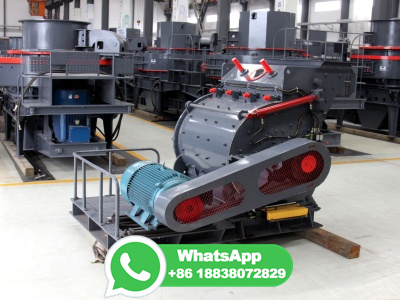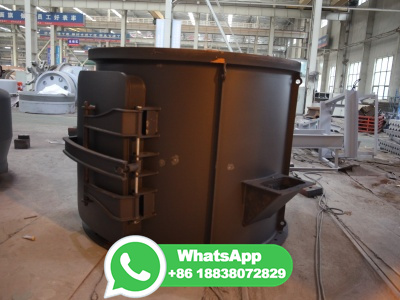
The document describes copper ore extraction and beneficiation operations with specific reference to the waste and materials associated with these operations and the potential environmental effects that may result from leadzinc mining.
WhatsApp: +86 18838072829
A number of primary ores such as phosphate rock, gold, copper and rare earth ores contain considerable amounts of accompanying uranium and other critical materials. Energy neutral mineral processing is the extraction of unconventional uranium during primary ore processing to use it, after enrichment and fuel production, to generate greenhouse gas lean energy in a nuclear reactor.
WhatsApp: +86 18838072829
The high demand for gold and the fluctuating gold prices have necessitated the need for processing of lower grades ores, waste rock dump materials and scrap residues. Bacteria are now increasingly being used to facilitate the extraction of metals from low grades ores and concentrates (bio mining) that cannot be economically processed by ...
WhatsApp: +86 18838072829
The utilization of solid waste is the challenge for the civil and environmental engineers to utilize the waste from different industry to excel the sustainable development, and in the same time, it is matching with the cost concern of the present materials. Copper slag is a byproduct obtained during smelting and refining of copper. The waste copper slag can be used as abrasive tools, road ...
WhatsApp: +86 18838072829
With the vigorously growing demand of the steel industry, corrosion resistance alloys, clean energy industries, and a variety of engineered infrastructure or technology, highgrade nickel ores are being exhausted gradually in the world. This review outlines metallurgical processes for nickel production from various nickel sulfide ores resources, particularly focusing on recent developments in ...
WhatsApp: +86 18838072829
Mining wastes, particularly in the form of waste rocks and tailings, can have major social and environmental impacts. There is a need for comprehensive longterm strategies for transforming the mining industry to move toward zero environmental footprint. "How can the mining industry create new economic value, minimise its social and environmental impacts and diminish liability from mining ...
WhatsApp: +86 18838072829
The current technology of soda ash Chromium Ore Processing Residue (COPR) detoxification consumes a large amount of acids (as in the wet reduction process) and requires high temperature, along with the generation of carbon dioxide (as in the dry reduction process), and thus, is not costeffective and environmentallyfriendly. Waste molasses (WM) is waste biomass consisting of various reducing ...
WhatsApp: +86 18838072829
Introduction to Mineral Processing. Mineral processing is a field that contends with procedures and technologies used for separating valuable minerals from gangue or waste rock. It is a process that converts the extracted ore through mining activity into a more concentrated material, which serves as an input for the extractive metallurgy.
WhatsApp: +86 18838072829
A global copper minebymine review undertaken by ICSG found that the global average copper ore grade was as low as % copper in reported reserves and only % copper in 2015 copper mine production. ... special emphasis has been made to process complex secondary raw materials and industrial waste using the ability of existing smelting ...
WhatsApp: +86 18838072829
Published Jan 27, 2023. + Follow. copper ore. Copper ore can be cleaned using a variety of methods, including gravity separation, froth flotation, and magnetic separation. The method used will ...
WhatsApp: +86 18838072829
Production of geochemically scarce elements from copper ore and the valorization of matrix materials that are cooutputs of copper ore processing 3. Coproduction of copper and other geochemically scarce elements from endoflife products, especially endoflife electric and electronic equipment and car electronics 4.
WhatsApp: +86 18838072829
Applied across the industry, improved coarse particle flotation can result in an additional million to million metric tons of annual copper production by 2032. If applied across all metals found in sulfide deposits, the technology represents potential value creation of 9 billion to 26 billion per year.
WhatsApp: +86 18838072829
The quantity of ore mined and waste rock (, overburden or barren rock) removed to produce a refined unit of a mineral commodity, its rocktometal ratio (RMR), is an important metric for understanding mine wastes and environmental burdens. In this analysis, we provide a comprehensive examination of RMRs for 25 commodities for 2018. The results indicate significant variability across ...
WhatsApp: +86 18838072829
Projections for copper use show that consumption in the next 25 years will be higher than the total cumulative consumption since the Copper Age (during the Neolithic). ... Some mineral processing and metallurgical concepts associated with ore processing can be transferred to the exploitation of mining, metallurgical and manufacturing waste and ...
WhatsApp: +86 18838072829
Many mineral processing waste materials have limited potential for use as aggregates because of their fineness, high impurity content, trace metal leachability, propensity for acid generation, and/or remote location (, away from aggregate markets). ... Water absorption values for lead, zinc, copper and iron ore tailings are typically higher ...
WhatsApp: +86 18838072829
Recycling copper is a highly ecoe˛cient way of reintroducing a valuable material back into the economy. The recycling of copper requires less energy than primary production and reduces CO 2 emissions. In addition to its environmental benefits, the recycling of complex copper scrap, such as electronic waste, drives the recovery of many
WhatsApp: +86 18838072829
Tailings are Mine Waste. Tailings are the waste materials left after the target mineral is extracted from ore. They consist of: Crushed rock. Water. Trace quantities of metals such as copper, mercury, cadmium, zinc, etc. Additives used in processing, such as petroleum byproducts, sulfuric acid and cyanide.
WhatsApp: +86 18838072829
The practice of mining for ores and processing mineral sites, while common, results in an excess production of mine tailings waste as a byproduct. Due to the exponential consumption of metals, profitmotivating factors, and advancement in technology that allows for the exploitation of lower grade ores, the amount of mine tailings is growing ...
WhatsApp: +86 18838072829
For the different metal industries considered (aluminium, copper, iron and steel, lead, niobium, tin and zinc), NOR activities in feed material for metal smelting are generally low. The same holds for slag and other wastes. Ore and waste products for the tin industry contain higher activities though (100,000200,000 Bq kg −1 210 Pb and 210 Po).
WhatsApp: +86 18838072829
The authors describe the opportunities of lowgrade sulfide ores and mine waste processing with heap and bacterial leaching methods. By the example of gold and silver ores, we analyzed specific issues and processing technologies for heap leaching intensification in severe climatic conditions. The paper presents perspectives for heap leaching of sulfide and mixed ores from the Udokan (Russia ...
WhatsApp: +86 18838072829
This process uses aqueous (waterbased) solutions to extract and purify copper from copper oxide ores at ordinary temperatures, usually in three steps: heap leaching, solvent extraction, and electrowinning. Heap Leaching and Solvent Extraction of Oxide Ore. Heap Leaching is the process of using percolating chemical solutions to leach out metals.
WhatsApp: +86 18838072829
Copper Content in Ores and Concentrates. A global copper minebymine review undertaken by ICSG found that the global average copper ore grade was as low as % copper in reported reserves and only % copper in 2015 copper mine production. Global weighted average of copper concentrate output in a large sample of plants was around 25% ...
WhatsApp: +86 18838072829